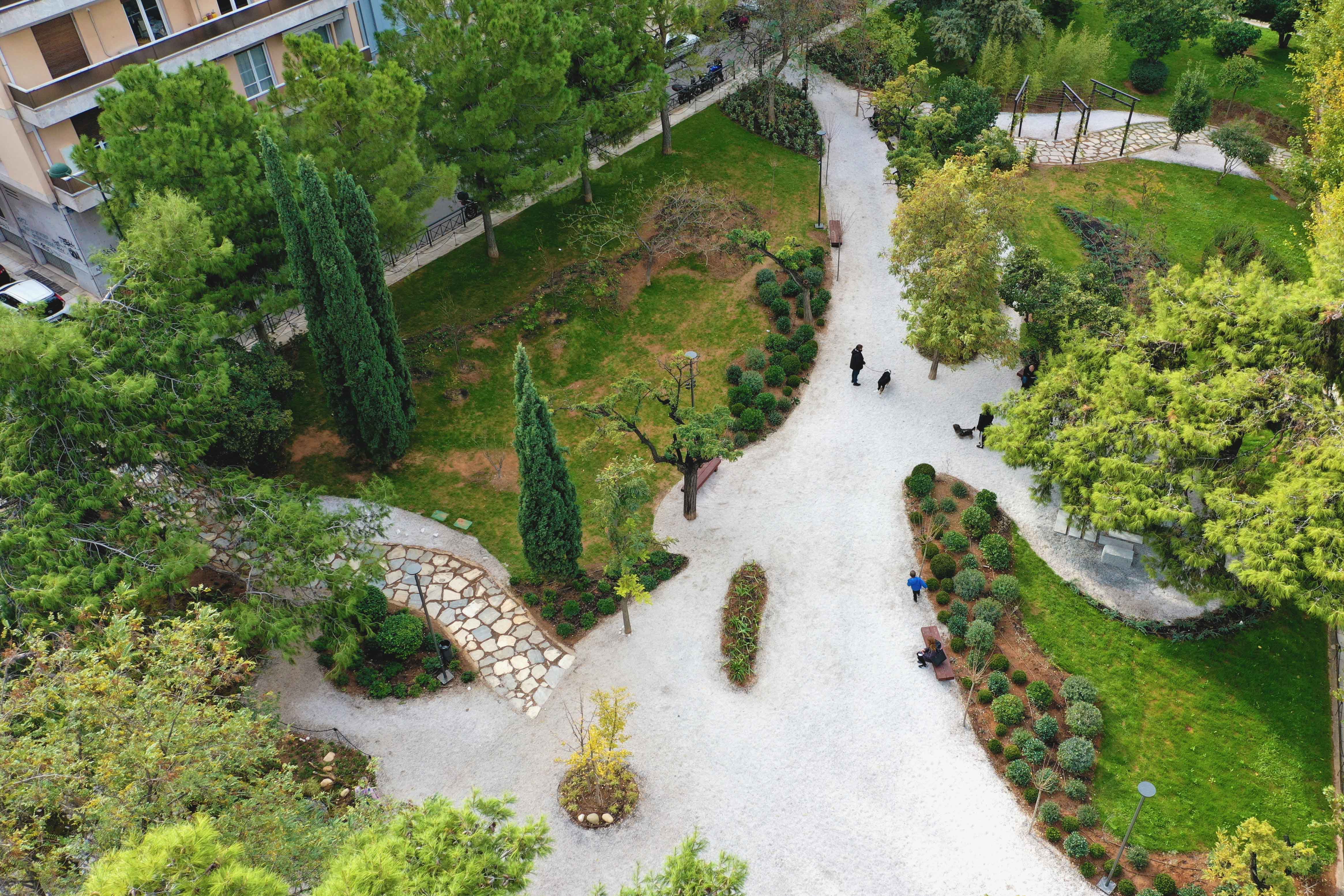JAPANESEGARDEN
BACKPark in Athens
Planting area: 3.500 m2
Completion of the study: June 2021 ( Athens Municipality and Japanese Embassy initiative /JTI Hellas support)
Planting period: 1st phase November 2021. In progress
Planted: 40 trees / 2.000 shrubs and perennials
Niriides park is easily accessible from neighboring areas. Surrounded by arterial routes and secondary roads, easily accessible and welcoming, the park can be transformed into a pole of attraction for Athenians and tourists. Niriides park is a refreshing green site within the busy urban fabric, surrounded by significant establishments, buildings and museums for the city of Athens.Vasileos Konstantinou Avenue, which is located north of the park, is considered the ‘Museum Lane’ of Athens due to the number of museums and cultural buildings situated along the boulevard. At the north side of the park stands the National Gallery of Athens, which was recently renovated, considered to be one of the most emblematic buildings of postmodernarchitecture in the city alongside the 5-star Hilton Hotel. The Byzantine Μuseum and Athens Conservatoire are adjacent to the site, highlighting the cultural‘core’ surrounding our chosen location.
The main circulation path of the park offers the opportunity to create a wondrous, mysterious and exploratory strolling garden with adjacent meandering paths constructed of crushed gravel and scattered rocks carefully placed around the dry river. Paths are an integral part of the Japanese garden,carefully arranged to lead visitors to the best views of the garden. Rocks and manicured shrubs, cloud - like formations, framed pathways characterize the movement within the park as a moongate made of climbing Wisterias along wooden arches,fascinates the visitors walking through a small bamboo grove at the northwest side of the park. The existing Pine Tree at the main entrance of the park is meticulously manicured in order to become the Welcoming Pine that leads the visitors to the garden. Cloud - clipped shrubs and granite benches are creating a space of gathering, serenity and seclusion, under the shadow of the Welcoming Pine. Gravel and granite rocks are used to represent the flowing water of a stream or river. The elements used to create a dry stream that crosses the site, symbolize and represent flow, of so many functions and processes that take place innature as smaller and larger stones symbolizing islands while gravel represents water, the site becomes poetic and whimsical. A mixture of different varieties of Japanese Maple trees are planted over three small hills at the south part of the side, near the existing Pine alley, adding colour and textures along the main path of the garden. Additional architectural elements, characteristic of a Japanese Garden, will be intergrated into a next phase of the project by Japanese expertise. Additional architectural elements, characteristic of a Japanese Garden, will be intergrated into a next phase of the project by Japanese expertise consultants in collaboration with the design team. A torii gate, characteristic of the Japanese Gardens, will be placed at the main entrance of thepark in order to welcome the visitors to the park, while the lanterns and the granite rocks will be placed in the first Japanese Garden in Athens. The design approach of the park lighting is based on two axes: enhancing the area safety and upgrading aesthetically the whole area, during the night. Special shadow effect filters reproduce the natural shading, like the one created during the day by the sun rays and filtered by the leaves of the trees.











